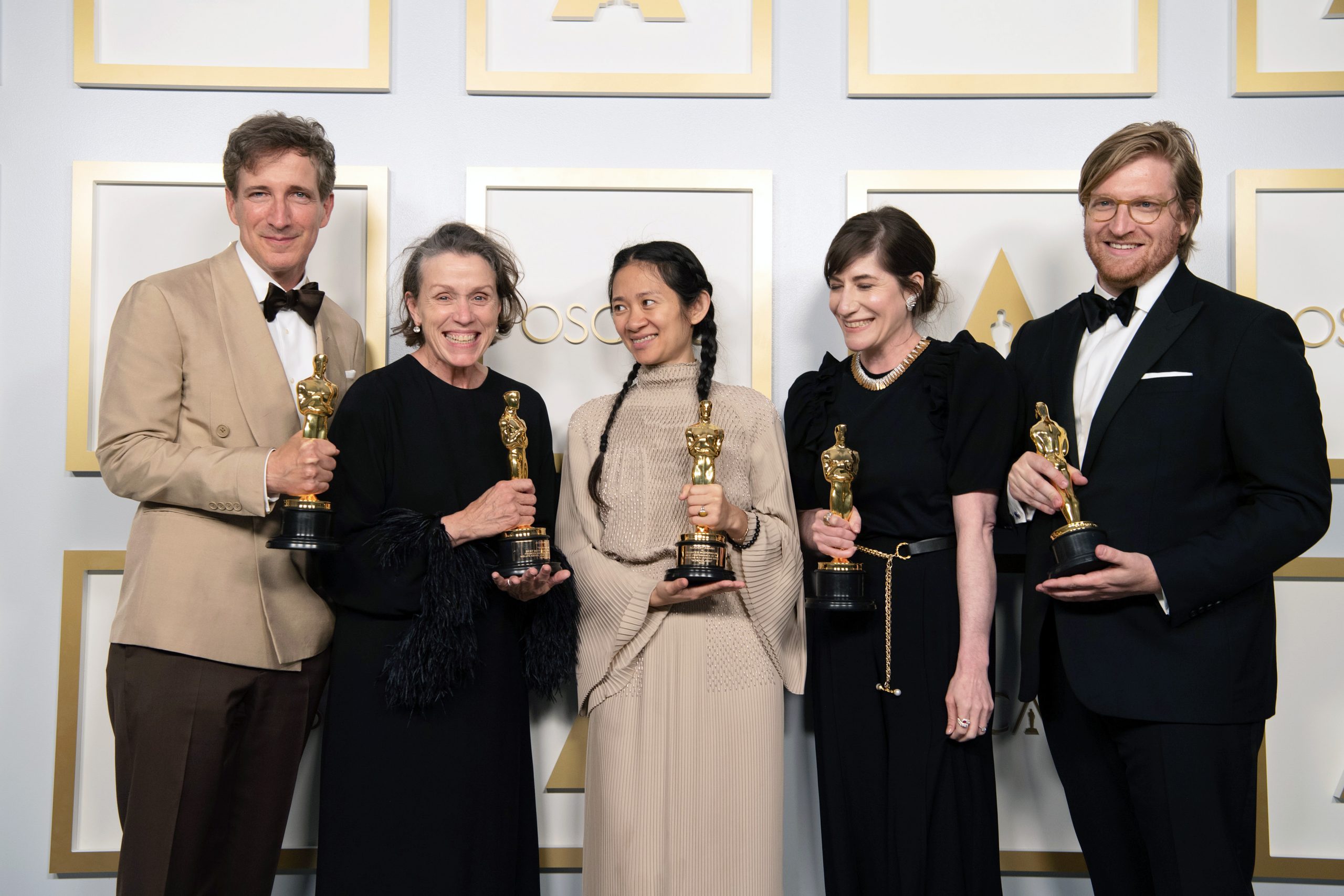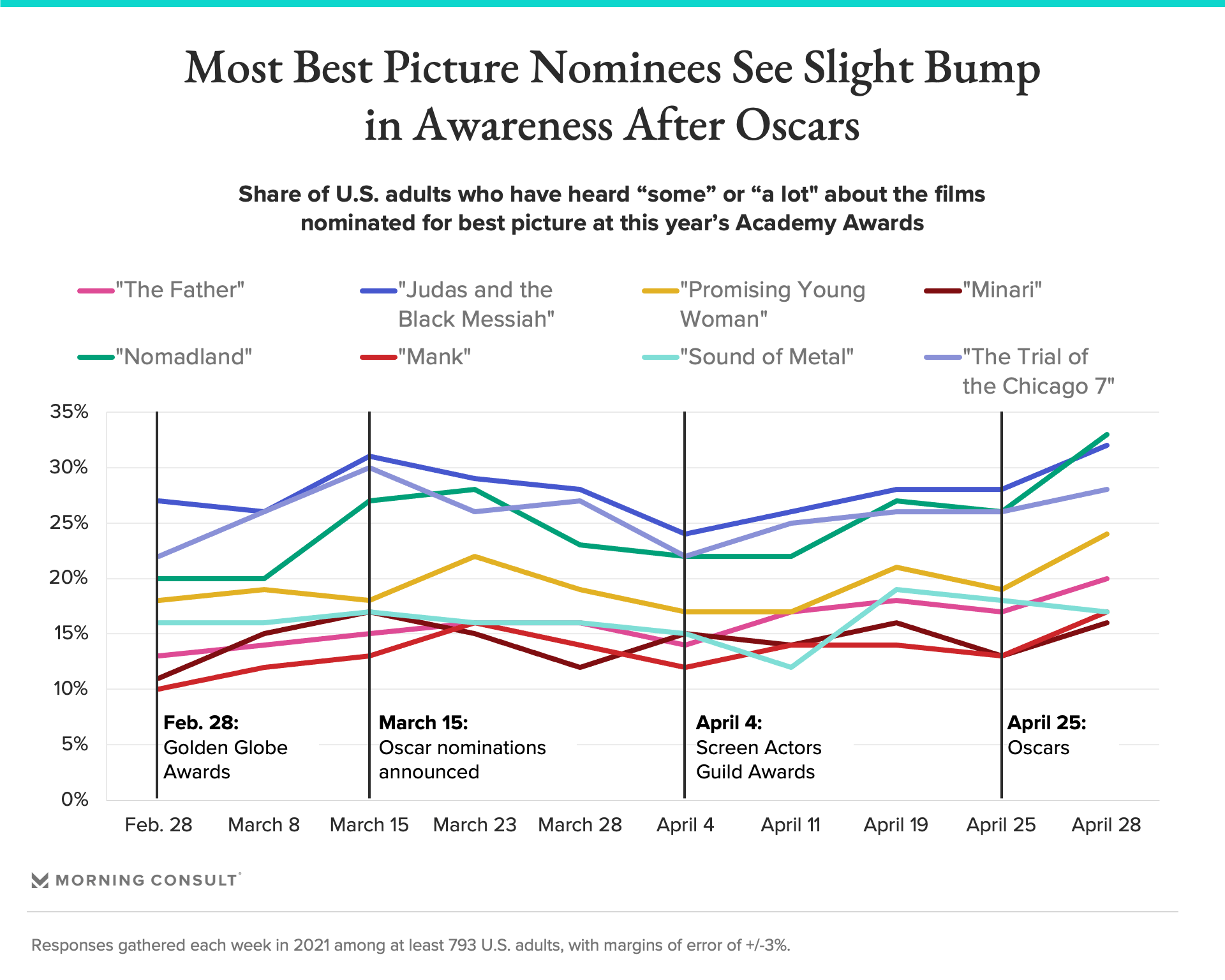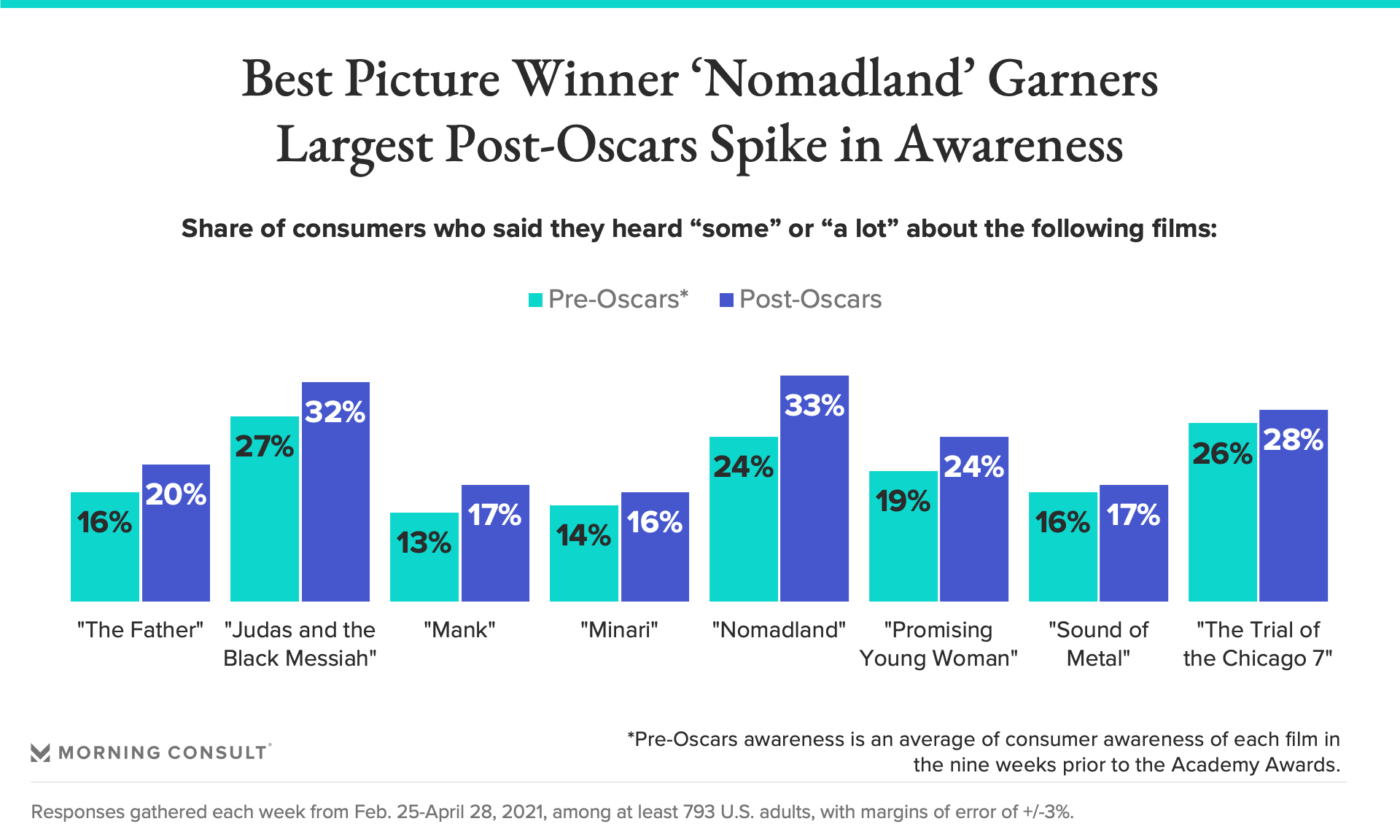Even After the Oscars, Most Americans Still Aren’t Familiar With Best Picture Nominees

Key Takeaways
On average, 19% of consumers had heard “some” or “a lot” about this year’s best picture nominees in the nine weeks prior to the Oscars.
During that time, consumers were most aware of “Judas and the Black Messiah” and “The Trial of the Chicago 7,” and least aware of “Mank.”
Post-Oscars, the average awareness of the best picture nominees was 23%, increasing most for best picture winner “Nomadland.”
With the majority of consumers unfamiliar with the year’s best picture nominees heading into the Academy Awards, Sunday’s ceremony only brought small upticks in awareness, according to Morning Consult polling.
In the nine weeks prior to Hollywood’s biggest night, on average, 19 percent of consumers had heard “some” or “a lot” about the eight films nominated for best picture, according to Morning Consult data, even with the majority of them available to stream at home.

The low levels of awareness were due to the pandemic’s upending of films’ marketing campaigns and the nominees’ subject matter not resonating with consumers, experts said.
Jon Selman, executive vice president of commercial and awards with Vision Media, said these films faced stiff competition simply because of the number of streaming services and the volume of content on each platform.
“You’re competing not just with five or six films in a theater,” Selman said. “You're competing with thousands of films on a streaming service.”
With attendance down at movie theaters, he added, marketers also lost many ways to reach consumers.
“There was really no outlet to market these films,” Selman said, noting that in a theater, films can be advertised via posters, digital ads and concession items.

In a Morning Consult survey conducted April 27-28 following the Oscars, the share of U.S. adults who had heard at least some about the best picture nominees increased, but not by much, to an average of 23 percent.
In general, awareness increased over the nine-week, pre-Oscars average by only a few percentage points for each film. However, “Nomadland,” which won best picture, saw awareness increase by 6 points this week, while “Promising Young Woman,” winner of best original screenplay, experienced a 5-point uptick.
“Judas and the Black Messiah” continued to rank highly in terms of familiarity, roughly matching the awareness of “Nomadland” in the wake of a big win for the Chloé Zhao-directed film.
“The Father,” “Minari” and “Promising Young Woman” all played theatrically and are available via premium video on demand, but the remaining five titles -- "Judas and the Black Messiah," “Mank,” “Nomadland,” "Sound of Metal" and "The Trial of the Chicago 7" -- debuted on subscription streaming services.
But even with streamers advertising the films on their homepages, Selman said these movies are reaching only a portion of the potential audience.
“You’re advertising directly on HBO Max,” he said, referring to “Judas and the Black Messiah.” “Normally, that is going to be advertised on cable on ABC, Super Bowl ads, things like that. It just wasn't there this year.”
The subject matter of the best picture nominees -- which touch on topics including dementia, sexual assault and social unrest -- may also have turned some viewers off, said Turner Classic Movies host Dave Karger.
“The films that were nominated this year, by and large, are intimate dramas, with, in many cases, difficult — or to some people, depressing — subject matter,” Karger said. “These are not movies that a lot of regular moviegoers necessarily feel like they want to see.”
Another challenge facing awards season contenders: declining viewership of awards shows.
The Oscars are the conclusion of a monthslong fête of the most-celebrated films and TV shows of the year. The runup to the big night includes stops at the Golden Globe Awards and Critics’ Choice Awards, as well as guild ceremonies, including the Screen Actors Guild Awards and the Producers Guild Awards.
Viewership for the Golden Globes declined more than 62 percent year over year, while the audience for the SAG Awards was roughly half of the number of viewers who tuned in last year, according to Nielsen.
The Oscars followed suit, with viewership down 56 percent from last year’s previous record low, Nielsen reported.
While Karger acknowledged that many viewers who actively choose to watch these ceremonies are already knowledgeable about the nominees, low viewership for the Globes “obviously hurt the awareness factor for a lot of these movies that otherwise would have gotten a bigger boost.”
Sarah Shevenock previously worked at Morning Consult as a reporter covering the business of entertainment.
Alyssa Meyers previously worked at Morning Consult as a reporter covering brands and marketing.